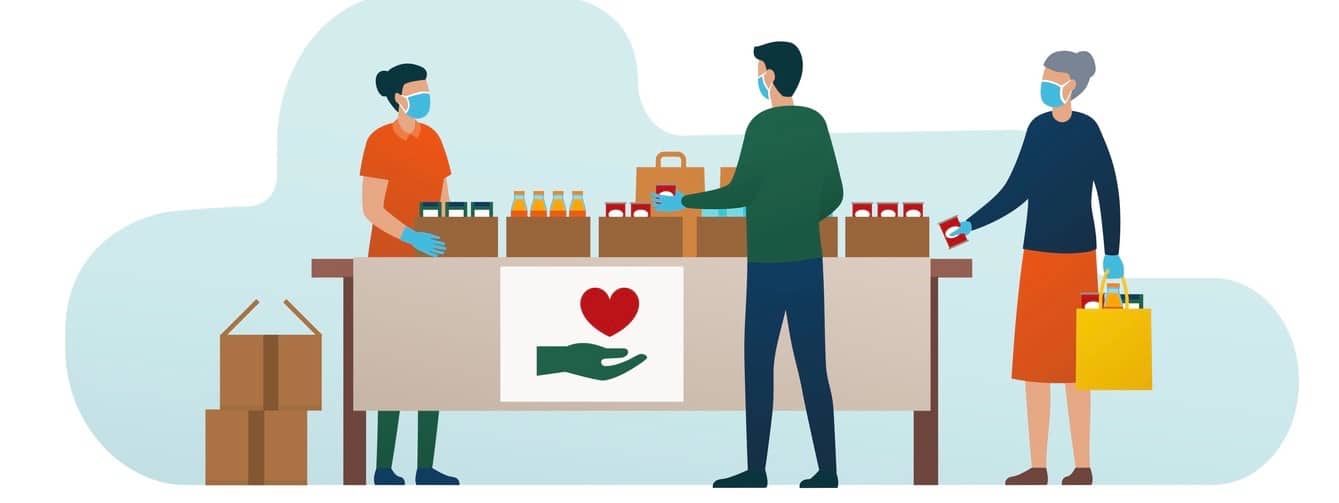The world is facing unprecedented economic and health challenges as the COVID-19 pandemic continues to infect thousands of people. Companies around the world have been faced with the challenge of adapting to rapidly changing economic conditions, the need to protect workers from health risks, governmental restrictions and a host of supply-line and logistical challenges. Despite all that, many companies have found ways to give back to the communities who have supported them during this crisis.
1. Watching out for seniors
People over the age of 65 are at a particularly high risk of severe complications from COVID-19. In recognition of this, companies have been finding ways to help older people lower their risk of infection. Grocery chains and retailers, such as Trader Joes, Giant Food, Stop & Shop, Costco, Walmart, Walgreens, Target, Kroger and others have established special senior-only hours so that older customers have a better opportunity to avoid coming in contact with other customers who may be carriers of the coronavirus.
2. Donating money and resources
Money is always useful in a crisis. Home decor retailer, Boll & Branch, has committed 10 percent of its proceeds to provide mattresses and pillows to emergency operations. Freshly, in partnership with Nestlé, has donated $500,000 to Meals on Wheels America. The plant-based, meal delivery service, Purple Carrot is donating a portion of its sales to Feeding America, through the end of May. Shoemaker, Adidas, has donated $3.2 million to the Solidarity Response Fund. Men’s clothing store, Bonobos is donating 10% of sales to Solidarity Response for the World Health Organization. Everlane is donating 100 percent of the profits from its 100% Human Collection clothing line to Feeding America’s COVID-19 Response Fund. These are just a few examples of the many companies who have made cash donations or committed a portion of their profits to COVID-19 relief.
3. Leveraging technology to keep people connected
The 21 years of Salesforce history includes a commitment to helping employers, workers and communities connect. The need for social distancing to slow the spread of the virus has created many challenges for workplaces, communities and employees who must find new ways to communicate while remaining apart. Salesforce has leveraged its Salesforce Cares platform to help provide technology solutions for employee help centers, customer service, workplace giving, small business assistance, and community needs that can be rapidly adapted to confront the changing landscape of the current crisis.
4. Donating personal protective equipment
Worldwide shortages of PPE for healthcare and other essential workers have put the people on the frontlines of this crisis at risk. Many companies have attempted to address the shortage by donating from their stockpile of PPE or by purchasing PPE. Salesforce has donated more than 50 million units of PPE to frontline workers.
5. Paying workers—even if there’s no work
Through governmental order, desire to protect workers or loss of business, many companies have closed their doors during this crisis. While these shutdowns have helped make it possible for more people to stay home during the pandemic, they have also cost millions of people their incomes. Some companies have addressed this issue by choosing to pay employees who might otherwise have been without income during a shutdown.
Additionally, some companies have enhanced their paid-sick leave policies to enable workers to self-quarantine or offered higher wages for essential workers who cannot work from home. Microsoft announced that they would continue to pay the hourly employees who service their campuses, even if their services are not needed during shutdowns. Google created a COVID-19 fund to provide paid sick leave for temporary staff and vendors who have symptoms of COVID-19 or who are quarantined. Amazon provided $2 per hour raises for warehouse workers who work during the crisis.
Companies, employees and communities are struggling to cope with the challenges presented by the COVID-19 pandemic. However, many companies have risen to that challenge and are helping their employees and communities weather this crisis.



